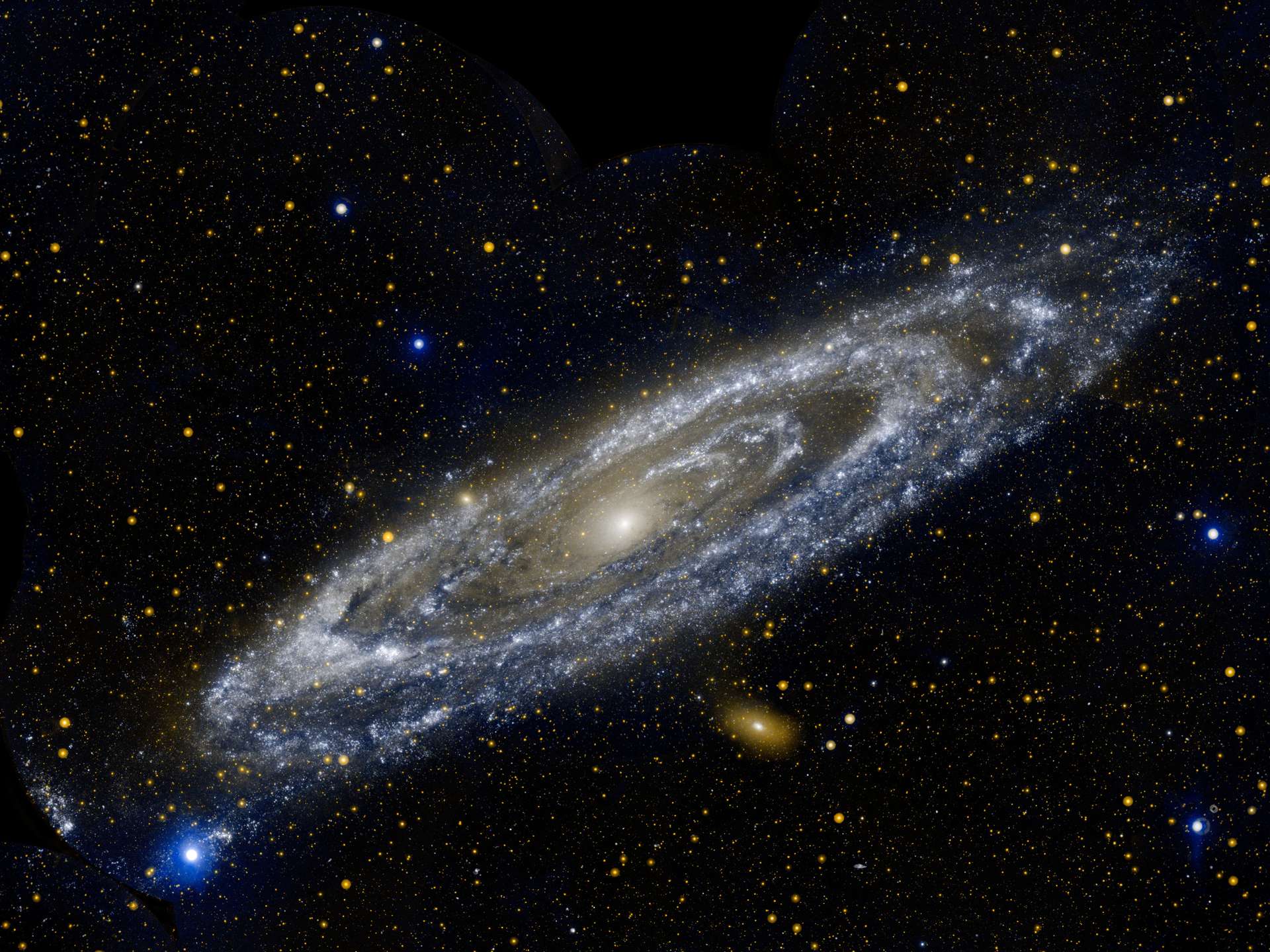
Dark energy could alter the collision between the Milky Way and the Andromeda galaxy
We know that at the end of the 1990s it was discovered that the expansion of the visible universe has accelerated over the past few billion years. This discovery is often simplified by saying that it is a discovery of dark energy but in reality all that has been brought to light by two teams of astrophysicists, one of them led by Saul Perlmutter, is this very acceleration. We can explain this without introducing the concept of dark energy, and in fact, the Nobel Committee that rewarded the leaders of the two teams for this discovery also speaks only of revealing the existence of an acceleration of expansion.
Technically, this phenomenon is described in its first approximation by adding a constant to Einstein’s equations of general relativity called the cosmological constant. Einstein did just that in 1917 when he presented the first cosmological model based on the theory of relativity for gravity. This constant has already been demonstrated by a repulsive effect which nullifies the gravity of masses of matter to give a stable and balanced universe.
The discovery of the acceleration of cosmic expansion and its explanations, interview with Futura-Sciences by Jonathan Saar, September 2014. © Jean-Pierre Luminet
The sun and the expanding solar system?
In fact, this balance was unstable, and from the 1930s to the 1990s almost everyone abandoned Einstein’s cosmological constant when Hubble discovered the expansion of the universe. Practically the only person to maintain this constant was Georges Lemaître, who was the first to correctly understand – in terms of the expansion of space – Hubble’s discovery of the relationship between the effect of the spectral redshift of light from galaxies and their distances to the Milky Way.
Hubble did not understand Einstein’s theory and for him, the shift is caused by the displacement motions of galaxies resulting in the Doppler effect. Lemaître has in fact established that it was a consequence of expansion, the stretching of the wavelength of light during its journey, an effect that is even more significant because the journey took so long.
Whether with or without a cosmological constant, the discovery of expansion posed the problem of knowing how far it had manifested itself. Do we conclude that the radii of the orbits of the planets of the solar system, the size of the Sun itself, increase with time?
The first item to reply has been given before Einstein and his assistant Ernst G. Strauss since 1945. The body’s gravity can be strong enough to completely negate the stretching effect. Calculations on this subject were refined over the following decades and showed that the potential effects of expansion on the scale of planets in the solar system or stars in the galaxy were almost insignificant..
But these calculations were made before the expansion of the observable universe was discovered. That is why a group of researchers from the University of Cambridge, England, Anne Davis of the legendary DAMTP (where Hawking worked) and Wyn Evans ofInstitute of Astronomy They reviewed this question with their colleague David Benestee, also from Department of Applied Mathematics and Theoretical Physics. They did this by performing analytical calculations taking into account the cosmological constant, the movement of the Andromeda galaxy relative to the Milky Way, as they explain in an article that will be published in Astrophysical Journal Letters.
A direct measurement of dark energy and new physics?
It turns out that the Andromeda galaxy has been known for a while to have a trajectory that will lead it to collide with the Milky Way and that this event actually happened almost several years ago, billions of years ago. This was known before the discovery of dark energy and is explained simply by showing that the stretching effect was only really noticeable when we started to move to scales slightly above the cluster of galaxies and so there was no problem with the light from the Andromeda galaxy actually being color shifted Blue, this time by a real Doppler shift due to the motion that Andromeda has in its path towards our galaxy.
Astrophysicists at the University of Cambridge discovered that the movements of the Andromeda galaxy and its expected collision within 4.5 to 5 billion years are actually sensitive to the value and nature of the cosmological constant, that is, say that these movements are affected in an insignificant way by the nature of darkness. Energy, each calculation gives different results depending on the modeling of the cosmological constant, either its value or its origin from new physics such as the standard tensor theory.
” Dark energy affects every pair of galaxies: gravity wants to hold the galaxies together, while dark energy pushes them apart. In our model, if we change the value of the cosmological constant, we can see how this changes the orbits of the two galaxies. Based on their mass, we can put an upper limit on the cosmological constant, which is about five times greater than what we can measure from the rest of the universe. David Benestee explains in a press release from the University of Cambridge.
And the researcher adds: Dark energy is one of the biggest mysteries in cosmology. Its effects may vary with distance and time, but hopefully this technology will help unravel the mystery. Since data from the James Webb Telescope (JWST) will provide more precise measurements of Andromeda’s mass and motion, this could help lower the upper limits of the value of the cosmological constant, pretty much everything. to detect and measure it. And to obtain other information by studying pairs of distant galaxies that are also affected by dark energy.

“Incurable web evangelist. Hipster-friendly gamer. Award-winning entrepreneur. Falls down a lot.”
